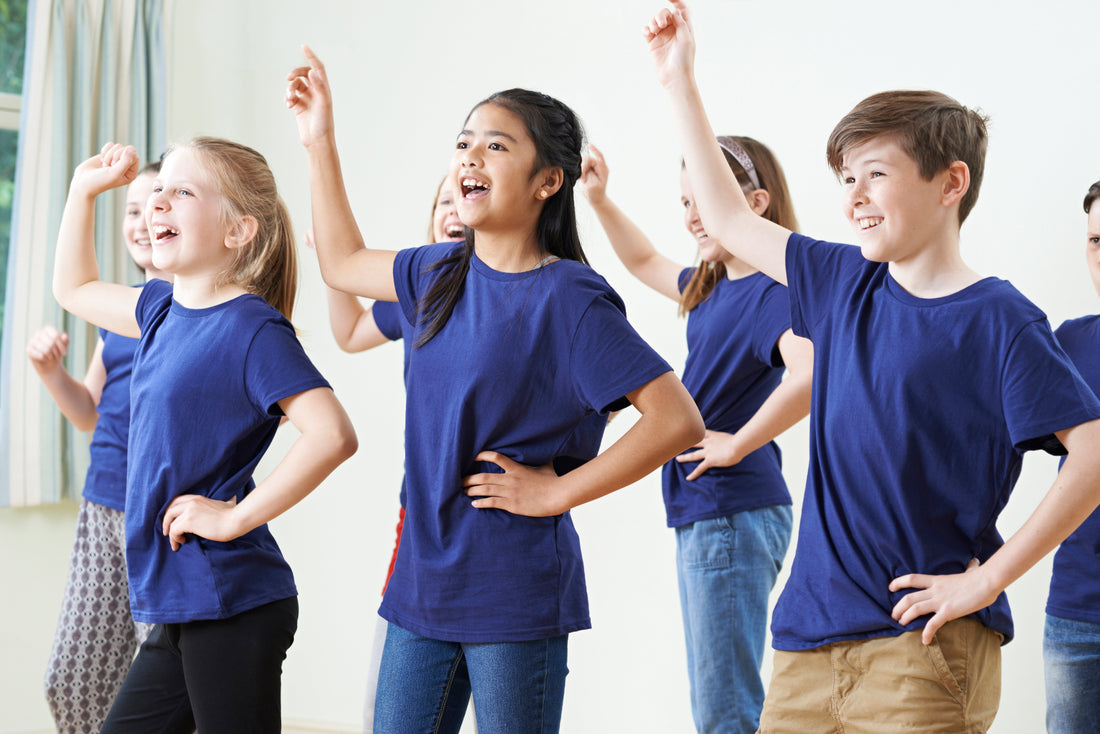How Singing and Movement Reinforce Reading Skills
Literacy skills are multi-faceted. Reading starts with decoding, stringing Consonant-Vowel-Consonants together to form words; but literacy instruction also includes rhythm, fluency, expression, and comprehension. And what better way to bring these elements to life than through music? For early readers, integrating singing and movement into literacy instruction can unlock engagement, improve retention, and make learning feel joyful instead of stressful.
Musical storytelling and movement can transform traditional literacy learning into a vibrant, interactive experience that supports all learners, especially those who thrive with hands-on, auditory, or kinesthetic instruction. Let’s explore how teaching literacy through music works, why it’s effective, and how you can begin using it in your classroom—no musical training required.
Why Music and Literacy Go Hand-in-hand
Singing activates the brain in ways that traditional reading instruction doesn’t. It links language to melody, rhythm, and emotion, helping students remember words, phrases, and sentence structures more effectively. When students move their bodies while singing, they’re also engaging muscle memory—another powerful tool for learning.
Here’s how singing and movement specifically support literacy skills:
1. Builds Phonemic Awareness
Songs break words into smaller sounds and syllables. Clapping or tapping to the beat reinforces these sound patterns, which helps students understand how words are constructed—an essential early reading skill.
2. Improves Reading Fluency
Singing naturally supports phrasing, pacing, and expression. Repeatedly singing lyrics allows students to practice and internalize fluency without the pressure of silent reading.
3. Strengthens Vocabulary and Comprehension
Musical lyrics are often rich in descriptive language, rhyme, and story structure. When paired with picture books, they give context to new words, making them easier to understand and remember.
4. Encourages Expression and Confidence
Performing a song or musical piece allows students to explore tone, character, and emotion in language. This builds their expressive reading skills and helps even reluctant readers participate with confidence.
5. Enhances Memory and Recall
Repetition is built into music. When students hear and perform the same songs repeatedly, they naturally retain the language patterns and vocabulary, reinforcing their reading progress.
Strategies for Teaching Literacy Through Music in the Classroom
Even if you’re not a music teacher, you can bring musical literacy to life in your classroom with these easy, research-backed strategies:
1. Sing the Story First
When reading a new book, introduce it with a simple, catchy song that reflects its theme or characters. This builds anticipation and activates listening skills.
Tip: Booksicals’ musical videos and soundtracks make this seamless—students hear the melody while following along with the text.
2. Turn Sight Words into Songs
Use familiar tunes (like “Twinkle, Twinkle” or “Row, Row, Row Your Boat”) and swap in common sight words or vocabulary. Repetition through melody helps students memorize tricky words.
3. Use Movement to Reinforce Meaning
Add hand motions, dance steps, or gestures to songs. Physical movement helps anchor the meaning of lyrics and enhances comprehension. It also helps restless students stay focused and engaged.
4. Echo Singing for Fluency
Use call-and-response singing (you sing a line, they repeat it) to model fluent reading and expressive phrasing. This is especially helpful for ESL students or those with speech/language delays.
5. Create a Classroom Performance
Prepare a simple musical presentation where students perform songs, recite lines, or act out scenes from a book. The performance goal builds motivation and encourages repeated reading and singing.
Pro Tip: The Booksicals Musical Play Kit provides everything you need—from scripts to music tracks—to stage a successful class production without the stress.
Who Benefits Most from Music-Based Literacy Instruction?
-
Emerging readers who are just starting to decode text.
-
Struggling readers who need new pathways to fluency.
-
English language learners who benefit from auditory repetition and rhythm.
-
Students with special needs, especially those with auditory or kinesthetic learning strengths.
All children who simply love to sing, move, and learn through play!
Final Thoughts: Bringing Literacy to Life with Music
When students sing their way through stories, act out characters, and move to the rhythm of language, reading becomes more than a skill—it becomes an experience. By integrating music and movement into literacy instruction, educators open up joyful, creative, and powerful pathways for all learners.
Booksicals makes it easy for schools to bring this vision to life, offering theater and music-based kits that are engaging, standards-aligned, and accessible to educators of all backgrounds. Because when reading is fun, learning lasts.
Let’s get every child reading—and singing—with confidence.
FAQs
Do I need to be musically trained to teach literacy with music?
Not at all! Booksicals kits include sing-along soundtracks, lyric sheets, and instructional videos so any teacher or afterschool leader can confidently lead activities.
How does music help with reading comprehension?
Songs often mirror story structure and use repetition to reinforce ideas, helping students remember and understand narrative elements more deeply.
Can this approach work with older students in grades 3–6?
Yes! Booksicals kits offer activities and scripts for grades 3–6 that are developmentally appropriate, with opportunities for deeper discussion, analysis, and performance.
Is this suitable for students with special needs?
Absolutely. Music and movement support multiple learning styles and can be adapted for a variety of abilities. Booksicals encourages inclusive participation.
What if I don’t have much time during the school day?
You can incorporate music-based literacy in short bursts—5 to 15 minutes per day—or use it as part of afterschool enrichment or STEAM blocks.
Want to learn more about using Booksicals in your classroom or afterschool program?
Visit www.booksicals.com to explore our Literacy & The Arts Kits and Musical Play Kits.
Let’s bring stories to life—one song at a time.
